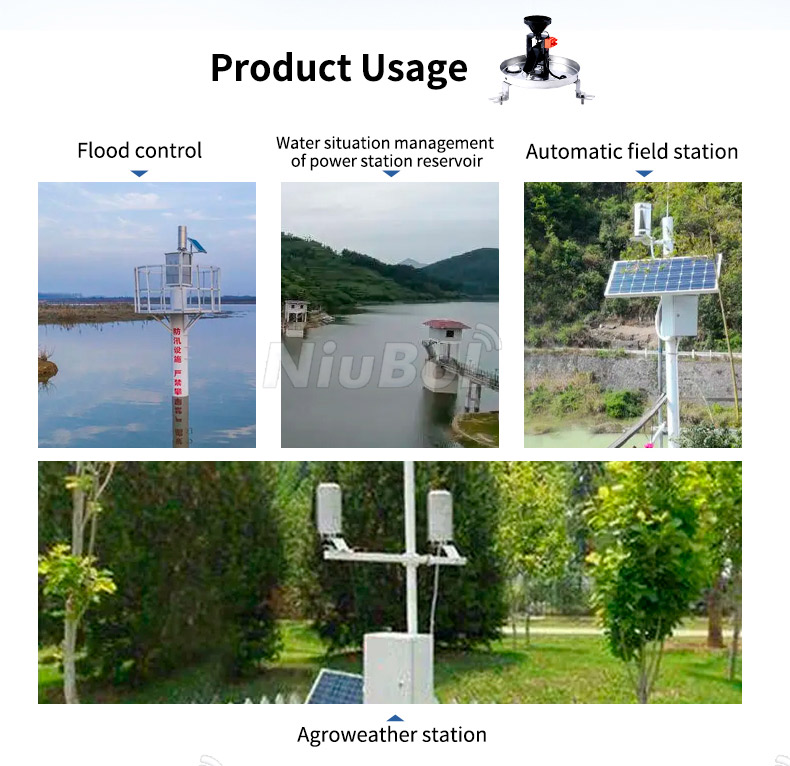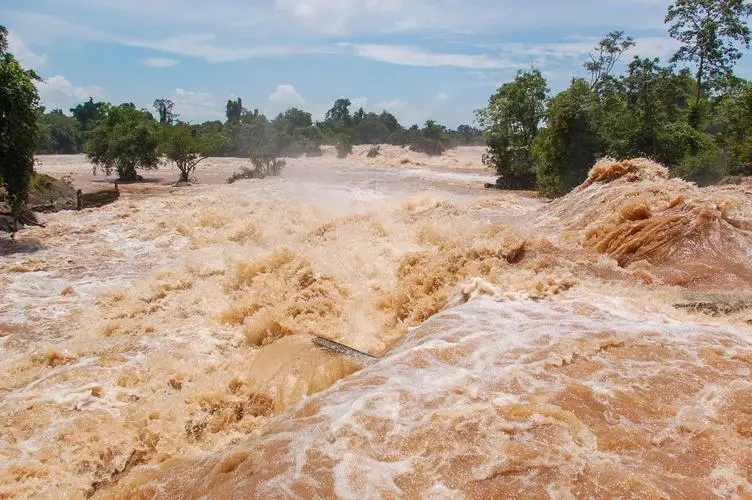

— Blogs —
—Products—
 Consumer hotline +8618073152920
Consumer hotline +8618073152920 WhatsApp:+8615367865107
Address:Room 102, District D, Houhu Industrial Park, Yuelu District, Changsha City, Hunan Province, China
Product knowledge
Time:2024-04-03 21:57:42 Popularity:1642
Rainfall monitoring and flood prediction are important meteorological and hydrological work, which is of great significance in protecting people's lives and property and reducing disaster losses. The following are the specific methods of rainfall monitoring and flood prediction:
Rainfall monitoring is mainly achieved through rain gauges. A rain gauge is an instrument used to measure precipitation and can be installed on the ground or monitored using meteorological satellites. The data collected by rain gauges can be used to accurately obtain the total amount and distribution of precipitation in a given area.
1. Choosing the right rain gauge: First, you need to choose the right rain gauge. Common types of rain gauges include tipping bucket rain gauges and photoelectric rain gauges. Make sure that the rain gauge you choose can adapt to the rainfall and environmental conditions in your area.
2. Installation of the rain gauge: Install the rain gauge in a suitable location, usually in an open, unobstructed area to ensure accurate measurement of rainfall. The choice of installation location is very important for the accuracy of data collection.
3. Connecting the data collector: Connect the rain gauge to the data collector, usually through an interface cable or sensor cable. Make sure the connection is correct and stable.
4. Configure the data collector: Configure the parameters of the rain gauge in the data collector, such as collection frequency, data storage format, etc. You may need to make some adjustments according to the specific situation. You may need to do some customised configuration according to the specific situation.
5. Data Collection and Transmission: After the data collector starts working, it will collect data from the rain gauge periodically. The data can be stored inside the data collector, or transmitted to the monitoring centre or data centre through the network, etc.

6. Data Analysis and Forecasting: After receiving the data, you can carry out data analysis, such as calculating the cumulative value of rainfall, analysing the trend of rainfall, etc. Combined with historical data and meteorological forecasts and other information, you can predict the future rainfall, and then predict the possible time and scope of flooding.

7. Flood Warning and Response: Based on the prediction results, flood warnings will be issued in a timely manner and corresponding precautionary measures will be taken, such as evacuating people and reinforcing dykes, etc., in order to minimise the damage that may be caused by floods.
The methods of flood prediction include:
(1) Hydrological modelling: by simulating the water movement of a river, the trend of flood development is predicted. The hydrological model can simulate the water level changes of rivers under different rainfall conditions according to rainfall, topography, river characteristics and other factors.
(2) Hydrometeorological models: Combining meteorological and hydrological data, mathematical models are built to predict floods. This method can more accurately predict the time, location and scale of floods.
(3) Artificial intelligence and big data analysis: using artificial intelligence technology and big data analysis methods to learn from historical rainfall and flood data, so as to achieve the prediction of floods.
In conclusion, rainfall monitoring and flood prediction require a combination of technologies and methods to improve the accuracy and timeliness of predictions. This helps us to better respond to flood disasters and protect people's lives and properties.
With the above steps, you can use data collectors to monitor rainfall and predict floods through data analysis so that you can take timely countermeasures.
Prev:What's the difference between fog sensor and visibility sensor?
Next:Laser snow depth sensor and ultrasonic snow depth sensor difference
Related recommendations
Sensors & Weather Stations Catalog
Agriculture Sensors and Weather Stations Catalog-NiuBoL.pdf
Weather Stations Catalog-NiuBoL.pdf
Related products
 Combined air temperature and relative humidity sensor
Combined air temperature and relative humidity sensor Soil Moisture Temperature sensor for irrigation
Soil Moisture Temperature sensor for irrigation Soil pH sensor RS485 soil Testing instrument soil ph meter for agriculture
Soil pH sensor RS485 soil Testing instrument soil ph meter for agriculture Wind Speed sensor Output Modbus/RS485/Analog/0-5V/4-20mA
Wind Speed sensor Output Modbus/RS485/Analog/0-5V/4-20mA Tipping bucket rain gauge for weather monitoring auto rainfall sensor RS485/Outdoor/stainless steel
Tipping bucket rain gauge for weather monitoring auto rainfall sensor RS485/Outdoor/stainless steel Pyranometer Solar Radiation Sensor 4-20mA/RS485
Pyranometer Solar Radiation Sensor 4-20mA/RS485
Screenshot, WhatsApp to identify the QR code
WhatsApp number:+8615367865107
(Click on WhatsApp to copy and add friends)
